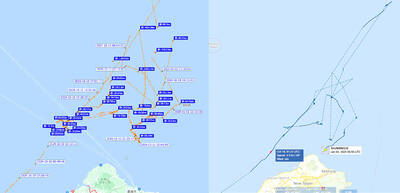Broadcast media have an obligation to avoid spreading fake news and could face fines if they refuse to comply with broadcasting regulations, the National Communications Commission said yesterday, adding that it would be setting up a meeting with media representatives soon.
The problems resulting from fake news have been scrutinized following the death of Su Chii-cherng (蘇啟誠), director-general of the Osaka branch of the Taipei Economic and Cultural Office.
Su committed suicide after the media harshly criticized how the office handled tourists stranded in Osaka following Typhoon Jebi.
“Broadcast media must check the facts of news reports that they investigate and apply the principle of equality. Failure to apply these principles, which can harm public interests and disrupt public order, could result in a fine of up to NT$2 million [US$64,908], based on the regulations stated in the Radio and Television Act (廣播電視法) and the Satellite Broadcasting Act (衛星廣播電視法),” the commission said.
It could also “order broadcast media to stop airing a program and to take action to rectify a situation,” it added.
The commission said that both acts have stipulated the fine since 2016, adding that some media have falsely reported that the commission is considering raising the fine for broadcast media found to spread fake news.
Individuals as well as government agencies should clarify any controversial facts about themselves that have been disseminated over the Internet, it said.
Depending on the laws they are charged with enforcing, government agencies should hold people accountable for spreading false reports, the commission added.
“The commission is overseeing whether broadcast media verify the facts that they present in news programs, regardless of the information’s source,” it said.
Verifying facts in news reports and editorials is an obligation of broadcast media that is stipulated in regulations, the commission said, adding that it should be the guiding principle for broadcast media when composing headlines and quoting statements from interviews.
Government agencies and broadcast media are encouraged to verify the facts in government information by first visiting the real-time news clarification Web site set up by the Executive Yuan, the commission said.

A strong continental cold air mass and abundant moisture bringing snow to mountains 3,000m and higher over the past few days are a reminder that more than 60 years ago Taiwan had an outdoor ski resort that gradually disappeared in part due to climate change. On Oct. 24, 2021, the National Development Council posted a series of photographs on Facebook recounting the days when Taiwan had a ski resort on Hehuanshan (合歡山) in Nantou County. More than 60 years ago, when developing a branch of the Central Cross-Island Highway, the government discovered that Hehuanshan, with an elevation of more than 3,100m,

Taiwan’s population last year shrank further and births continued to decline to a yearly low, the Ministry of the Interior announced today. The ministry published the 2024 population demographics statistics, highlighting record lows in births and bringing attention to Taiwan’s aging population. The nation’s population last year stood at 23,400,220, a decrease of 20,222 individuals compared to 2023. Last year, there were 134,856 births, representing a crude birth rate of 5.76 per 1,000 people, a slight decline from 2023’s 135,571 births and 5.81 crude birth rate. This decrease of 715 births resulted in a new record low per the ministry’s data. Since 2016, which saw

SECURITY: To protect the nation’s Internet cables, the navy should use buoys marking waters within 50m of them as a restricted zone, a former navy squadron commander said A Chinese cargo ship repeatedly intruded into Taiwan’s contiguous and sovereign waters for three months before allegedly damaging an undersea Internet cable off Kaohsiung, a Liberty Times (sister paper of the Taipei Times) investigation revealed. Using publicly available information, the Liberty Times was able to reconstruct the Shunxing-39’s movements near Taiwan since Double Ten National Day last year. Taiwanese officials did not respond to the freighter’s intrusions until Friday last week, when the ship, registered in Cameroon and Tanzania, turned off its automatic identification system shortly before damage was inflicted to a key cable linking Taiwan to the rest of

China’s newest Type-076 amphibious assault ship has two strengths and weaknesses, wrote a Taiwanese defense expert, adding that further observations of its capabilities are warranted. Jiang Hsin-biao (江炘杓), an assistant researcher at the National Defense and Security Research, made the comments in a report recently published by the institute about the Chinese Communist Party’s (CCP) military and political development. China christened its new assault ship Sichuan in a ceremony on Dec. 27 last year at Shanghai’s Hudong Shipyard, China’s Xinhua news agency reported. “The vessel, described as the world’s largest amphibious assault ship by the [US think tank] Center for Strategic and International